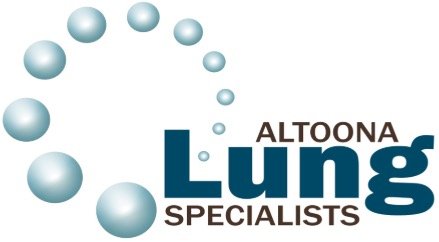Leaders in Providing Comprehensive Pulmonary Care and Sleep Medicine Services, All Under One Roof, for patients in and around Altoona, PA
Robotic Bronchoscopy
Looking for a lung specialist near me? Altoona Lung Specialists in Altoona, PA, offers advanced robotic bronchoscopy for precise lung biopsies. Book now!
Robotic Bronchoscopy - Altoona Lung Specialists
Welcome to Altoona Lung Specialists, where we provide cutting-edge medical technology to the community of Altoona, PA. Our group of healthcare professionals have been strong advocates for the implementation of robotic bronchoscopy in the pulmonary field, and we are thrilled to offer this state-of-the-art tool to our patients.
Robotic bronchoscopy is a minimally-invasive procedure that uses a robotic catheter to enter the lungs and retrieve biopsies. This technology provides a more accurate and precise way of diagnosing lung conditions such as cancer, infections, and other respiratory issues. The robots used in this procedure are run by a team of highly trained professionals who are dedicated to providing the best care to our patients.
At Altoona Lung Specialists, we understand the importance of early detection and timely treatment. We strive to stay at the forefront of medical advancements in order to offer our patients the best possible outcomes. If you’re ready to find relief, schedule your first appointment with us today.
How Does Robotic Bronchoscopy Work?
Robotic bronchoscopy works within the following phases:
- The planning phase: The systems require thin-slice CT scan data to plan the pathway and navigate to the desired target.
- The guidance and biopsy phase: These systems use a small robotic endoscope controlled by robotic steering devices under direct visualization or other unique technology driven by the operator.
The bronchoscopes are advanced and steered using a separate control device, so the operator is not actively touching the bronchoscope during your exam. This ensures that the bronchoscope is accurately placed and biopsies are collected in a quick, safe manner.
What are the Advantages of Robotic Bronchoscopy?
The benefits patients and providers can see from using robotic bronchoscopy include:
- Continuous endobronchial visualization
- Greater maneuverability of the tip of the bronchoscope
- The ability to lock into a desired position
In essence, robotic bronchoscopy allows the operator to achieve superior control, maneuverability, and accuracy for a wide range of interventions and procedures.
How Effective Is Robotic Bronchoscopy?
In recent studies, different types of robotic bronchoscopy systems have been tested to see how well they work:
- In one study of 15 patients with small growths in their lungs, a robotic system was successful in getting biopsies 93% of the time. Another small study of 30 patients found that a different robotic system was successful in getting a diagnosis in 83% of cases.
- In a larger study with 55 patients, the robotic system helped doctors locate the growths with a success rate of 96%. The diagnostic yield was 74%, meaning doctors were able to diagnose the problem in most cases. There was a small risk of complications, including pneumothorax (air leaking into the chest) and airway bleeding.
- Another larger study with 241 patients found that the robotic system could navigate to the growths in less time than in previous studies, and adequate tissue was obtained in 96% of cases. There was also a small risk of complications, including pneumothorax and airway bleeding.
What Can Robotic Bronchoscopy Help Diagnose?
Here is a list of some of the conditions that can be diagnosed using robotic bronchoscopy:
- Lung cancer
- Pneumonia
- Pulmonary nodules
- Inflammatory lung diseases, such as sarcoidosis
- Endobronchial lesions
- Airway stenosis
- Pulmonary fibrosis
- Lung abscess
- Fungal lung infections
- Tuberculosis
Robotic bronchoscopy is a versatile tool that can be used to diagnose a wide range of lung conditions. It is often used when traditional methods, such as a standard bronchoscopy, have been unsuccessful in obtaining a diagnosis.
